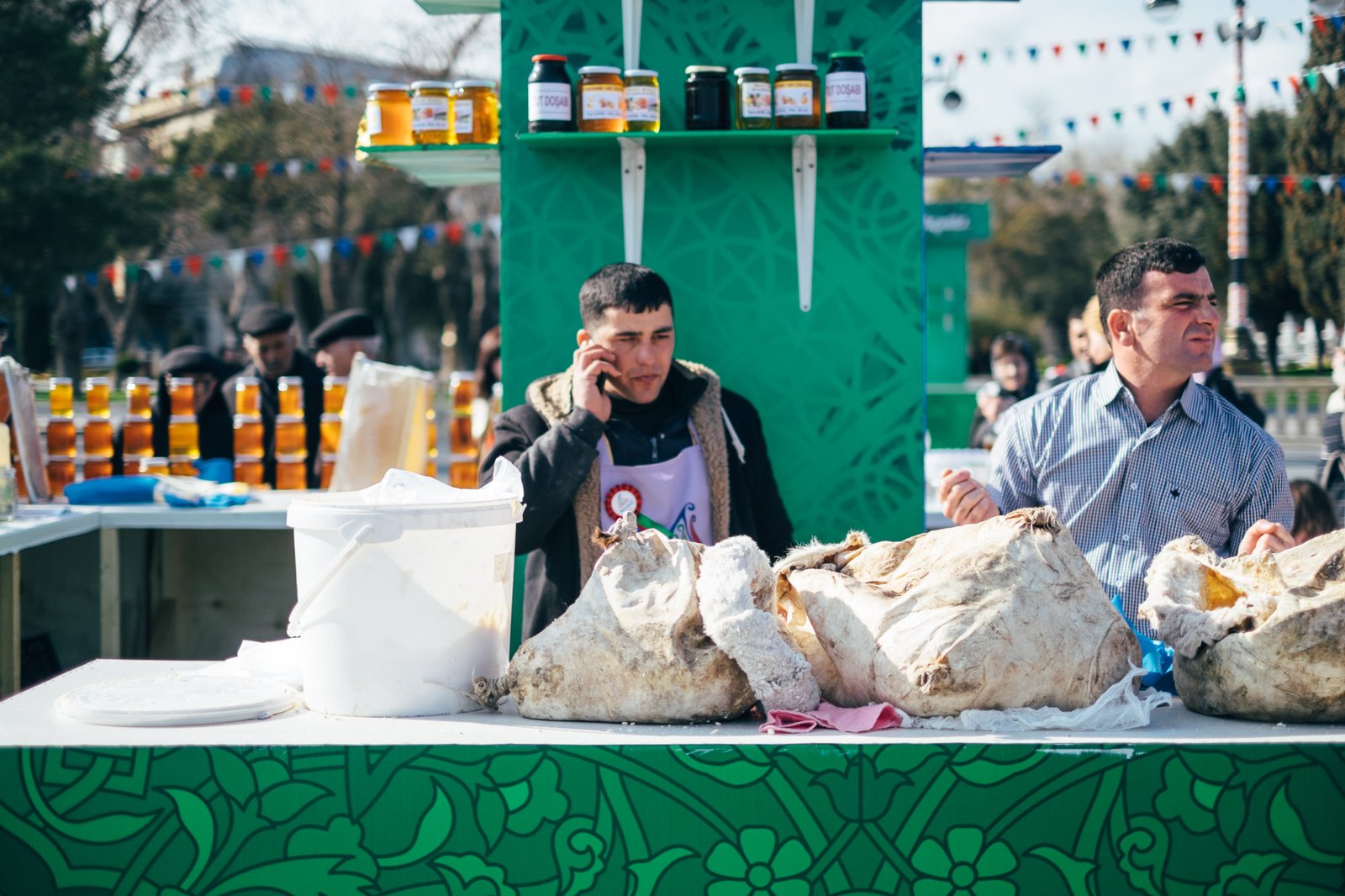The best dishes of Azerbaijan Food tells you the story about my fascinating food experience in Baku, and lists my top favourites dishes of Azeri cuisine.
What do you know about Azerbaijan? I certainly didn’t know much until a week or so ago. But because I thrive on discovery, and delving into the unknown is what makes travel exciting to me, I didn’t think twice when I was presented with a last-minute opportunity to join a trip to Baku, Azerbaijan’s capital city.
The amount of things I’ve learned about Azerbaijan, its culture and history, is overwhelming for such a short trip, but in this post I just want share a few highlights from my first encounter with Azerbaijan Food.
Food is an important cultural component of many societies around the world and when I visit a new destination I pay a lot of attention to what people eat, how they eat it, and what happens around food. One afternoon during a tea break between a late lunch and an early dinner, my host and new friend Zeynal said “Did you know that in Azerbaijan we keep feeding our guests even when they’re full?” I smiled back – as someone who was born and raised in Sicily, in the deep south of Italy, I can relate well to cultures where food has an emotional spin that goes far beyond its mere biological function.

So, how does Azerbaijan Food look and taste like?
Follow on for the highlights of my culinary experience in Baku. Just a little disclaimer though, this is by no means a comprehensive guide – in fact, there’s a big variety of dishes to try, but only a limited amount of lunches and dinners you can have in just three days. I do hope, however, to spark your curiosity about Azeri cuisine, and why not, to inspire you to travel to Azerbaijan to discover its rich gastronomic patrimony.
Raw Vegetables and Herbs
Any local restaurant will serve you raw vegetables and herbs among other appetizers. Like many people, I was already familiar with tomatoes and cucumbers, and apart from their freshness I had no surprises here. As I was eager to try something that I hadn’t tried before, I grabbed some tarragon (estragon in Azeri) , which is extensively used in Azerbaijan food preparation. It’s amazing how what looks like a common piece of grass can give off such a rich, aromatic flavour: a bitter component, a sweet one, and a hint of licorice-meets-anise.

There’s no shortage of great, fresh vegetables and herbs in Azerbaijan. Some studies have actually listed the quality of these vegetables and their inclusion in the local diet among the reasons why Azeri people are among the longest living in the whole planet.
Motal Pendiri
Our friend and award-winning chef Teymur pointed to the white cheese with his finger and said “you have got to try that one. You will love it!” – Motal cheese is produced in the Caucasus mountains and it is made from sheep and goat milk. Sometimes a mixture of both.

Fundamental to the flavour and uniqueness of consistency of this cheese if the maturing process. This cheese is matured inside a sheepskin and hung to dry. Its taste and texture distantly remind me of feta cheese. Due to its strong, salty taste Motal cheese is best enjoyed in (very) small quantities. Unless you are these guys. They eat it by the spoon full.
Pomegranate salad
Pomegranate is a popular ingredient in local cuisine. This is a gorgeous salad I enjoyed in Baku. Served as a cube on a lettuce leaf, it was made with boiled potatoes and local form of mayonnaise, and topped with pomegranate grains. A delicate taste, and definitely a great presentation.
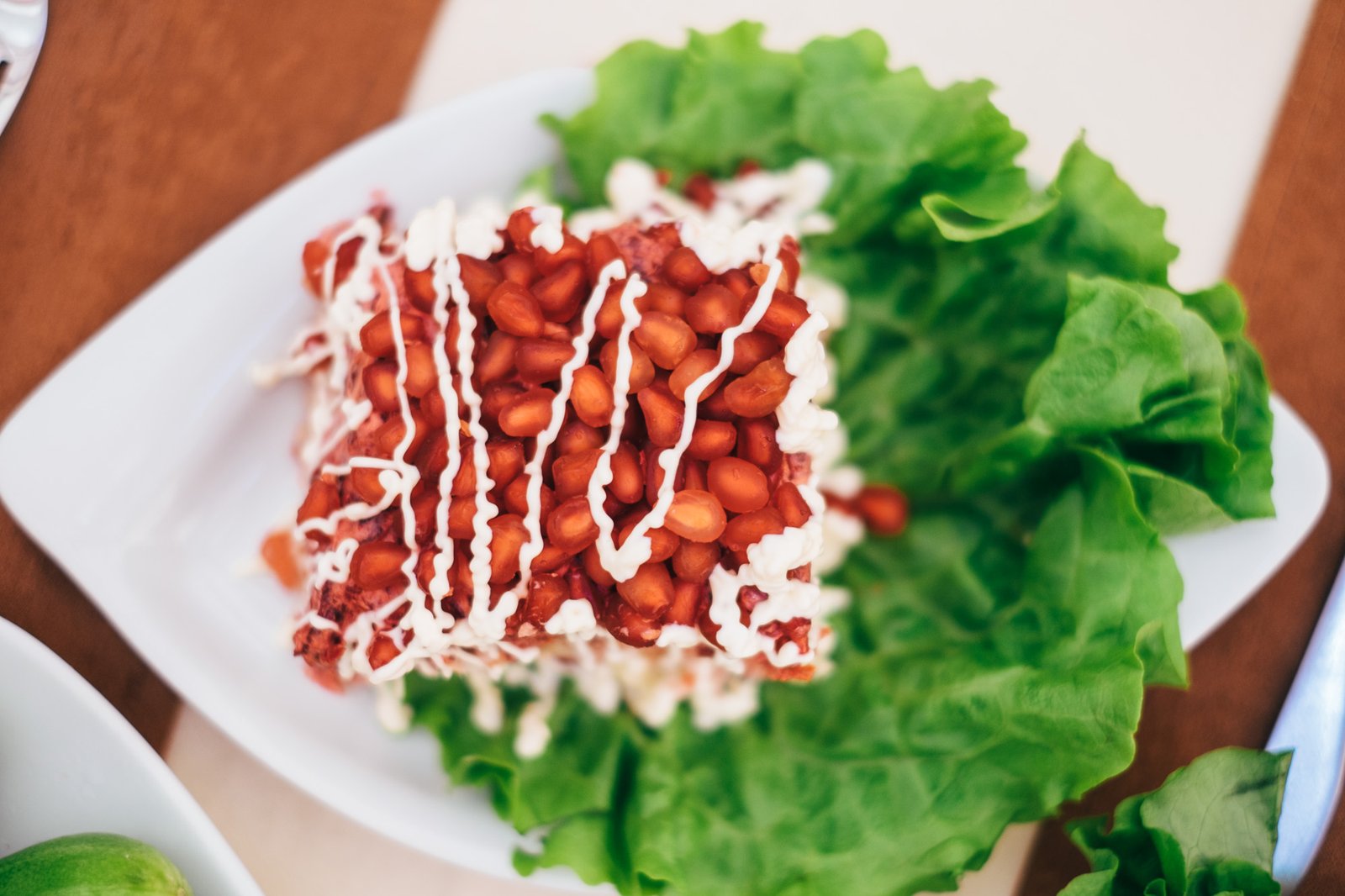
Mangal salad (also spelled as Manqal)
To a lover of aubergines like me, this salad could not pass unobserved. When it was brought to the table, I noticed some similarities with the Sicilian caponata. The similarity was only in the looks as the preparation of the two dishes and their taste considerably.
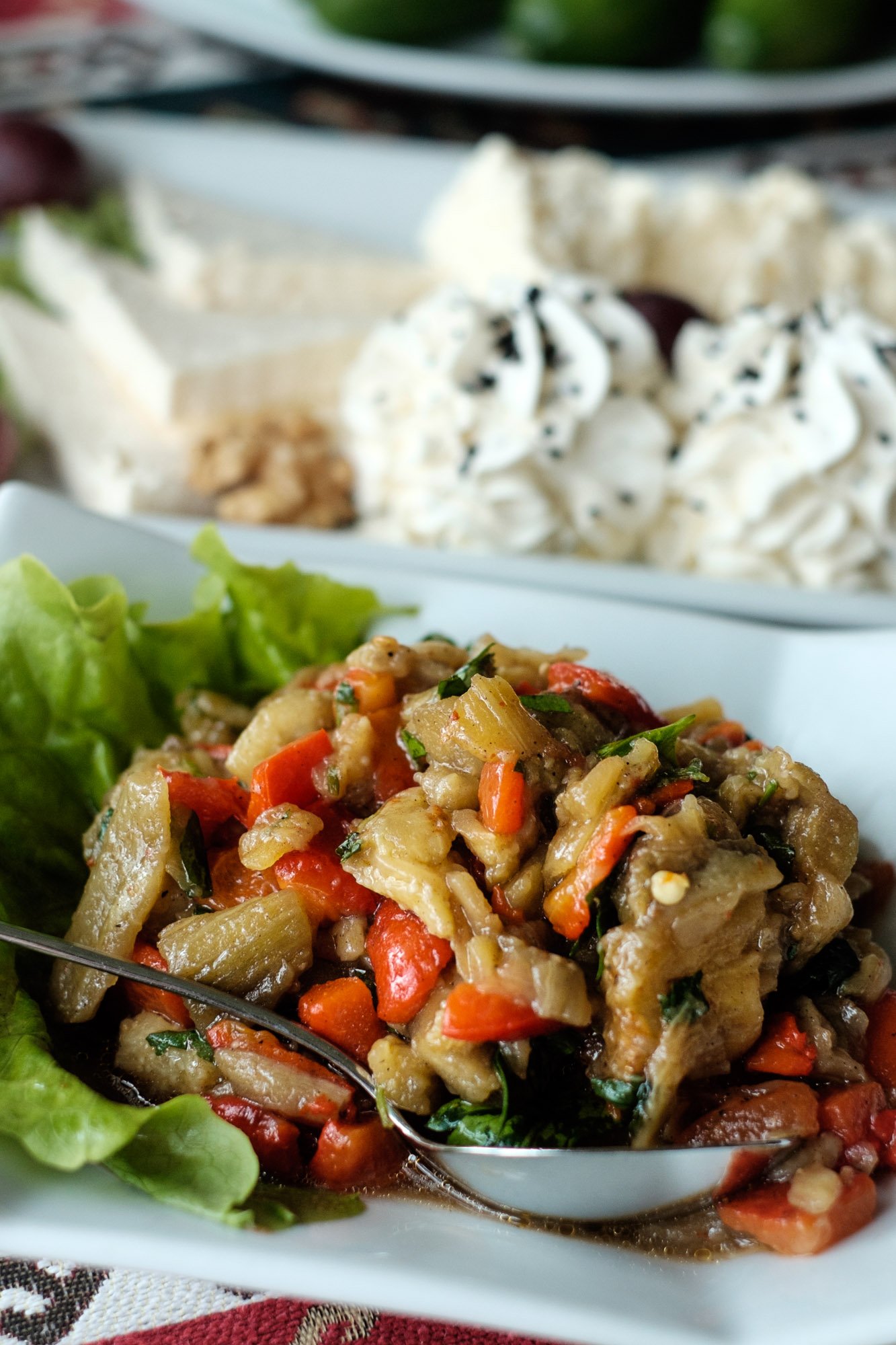
In the mangal salad Aubergines, peppers and tomatoes are roasted on an open flame, or grilled on a “Mangal”, the name for the azeri barbeque. Subsequently the skin is peeled and the vegetables chopped in cubes and mixed with olive oil, vinegar, salt and, sometimes basil. Mangal salad is best enjoyed with bread (tandir bread was my favourite) and why not, a piece of Motal cheese.
Lamb Sadj (also spelled as Saj)
When this Sadj was served, a number of “ohhhh” and “mmmhh” were heard at our table. I swear I wanted to take a picture that could make it justice, but on the other hand I didn’t want to delay my fellow diners. After a couple of shots I realised my photos weren’t going anywhere and I gave up at the first semi-acceptable frame. Then I sat and ate.

Sadj is actually the name of the pan, but the term is used to define the dish itself: lots of lamb and vegetables including potatoes, green peppers and my beloved aubergines, cooked in guyrug (fat from the rump of a local breed of sheeps). My tip is, when you’re finished with the meat and the vegetables, get your hands on a piece of bread and sponge it into the tasty, oily guyrug.
Fisinjan (also spelled as Fisindjan)
Meat in a sweet dark sauce made with plums, pomegranate molasses, walnuts, red onion, salt and sugar, and served with pilaf rice on the side. A sweet, exotic taste, the memory of which is making me hungry right now!
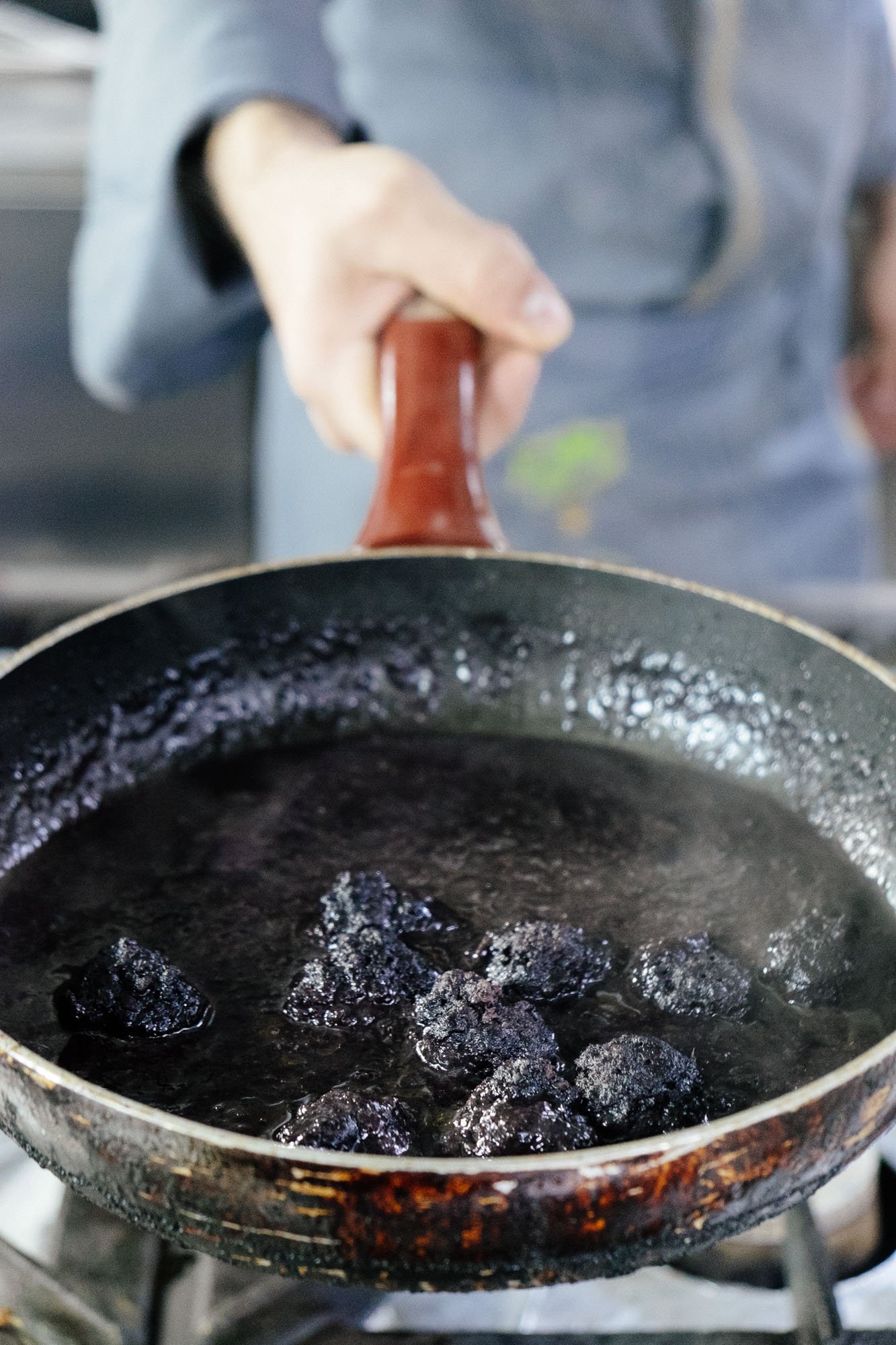
Fisinjan is a recipe of Persian origin – which says a lot about how the history of Azerbaijan has shaped its cuisine – and it’s a popular dish in Iran too. I was lucky enough to have chef Teymur Shixaliyev cooking his very own version of this dish for me.

To prepare fisinjan Teymur first prepared some handmade lamb meatballs and boiled them for a couple of minutes, then made the sauce. He used a hot horseshoe, following a traditional Azeri way of cooking. He heated the horseshoe on an open flame and dropped it in the sauce to make it boil, and – I was explained – to make the sauce darker.
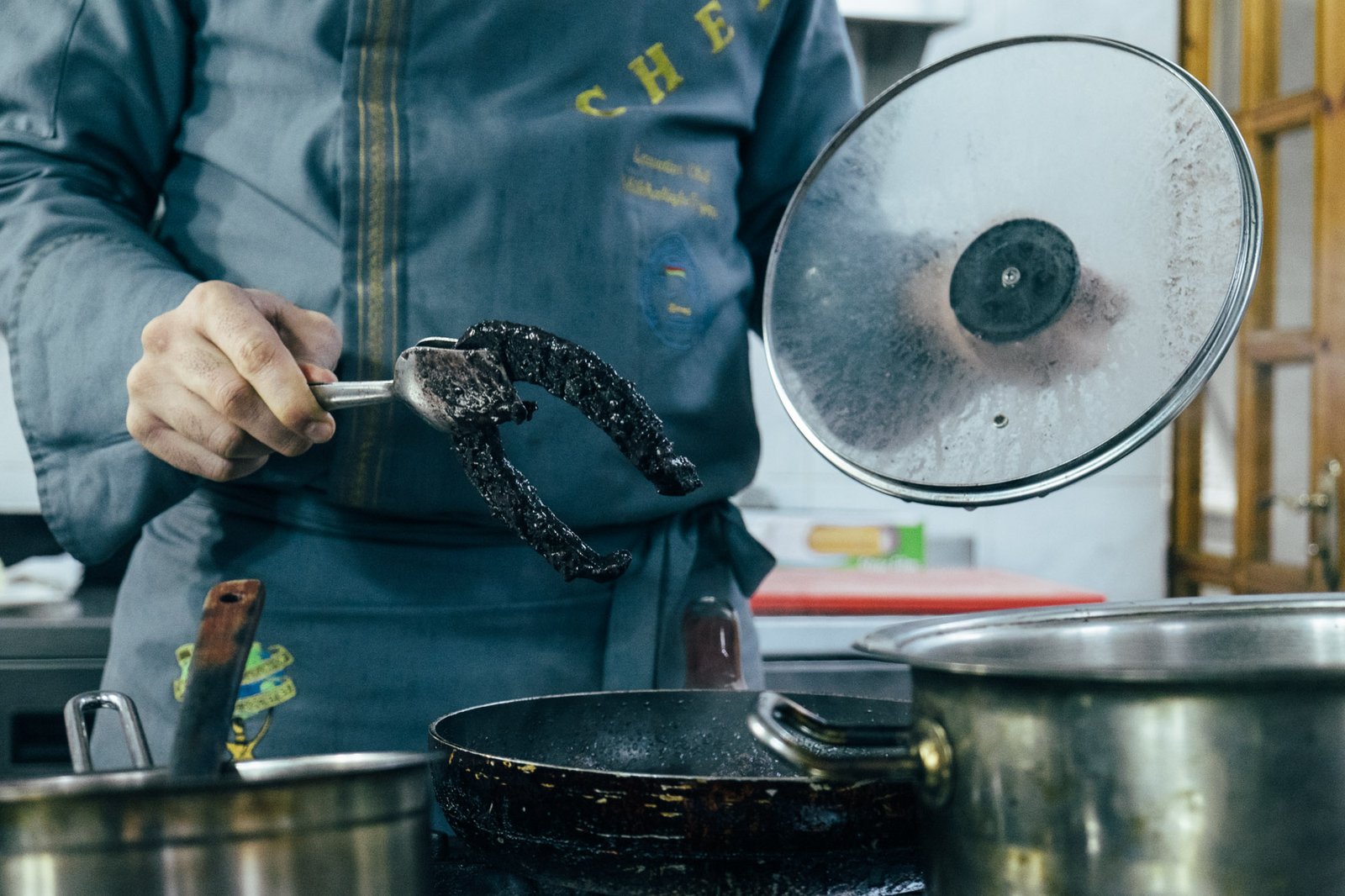 He then mixed the meatballs with the sauce, He also made a delicious pilaf rice cake by wrapping the rice in a bunch of lavash flatbread.
He then mixed the meatballs with the sauce, He also made a delicious pilaf rice cake by wrapping the rice in a bunch of lavash flatbread.
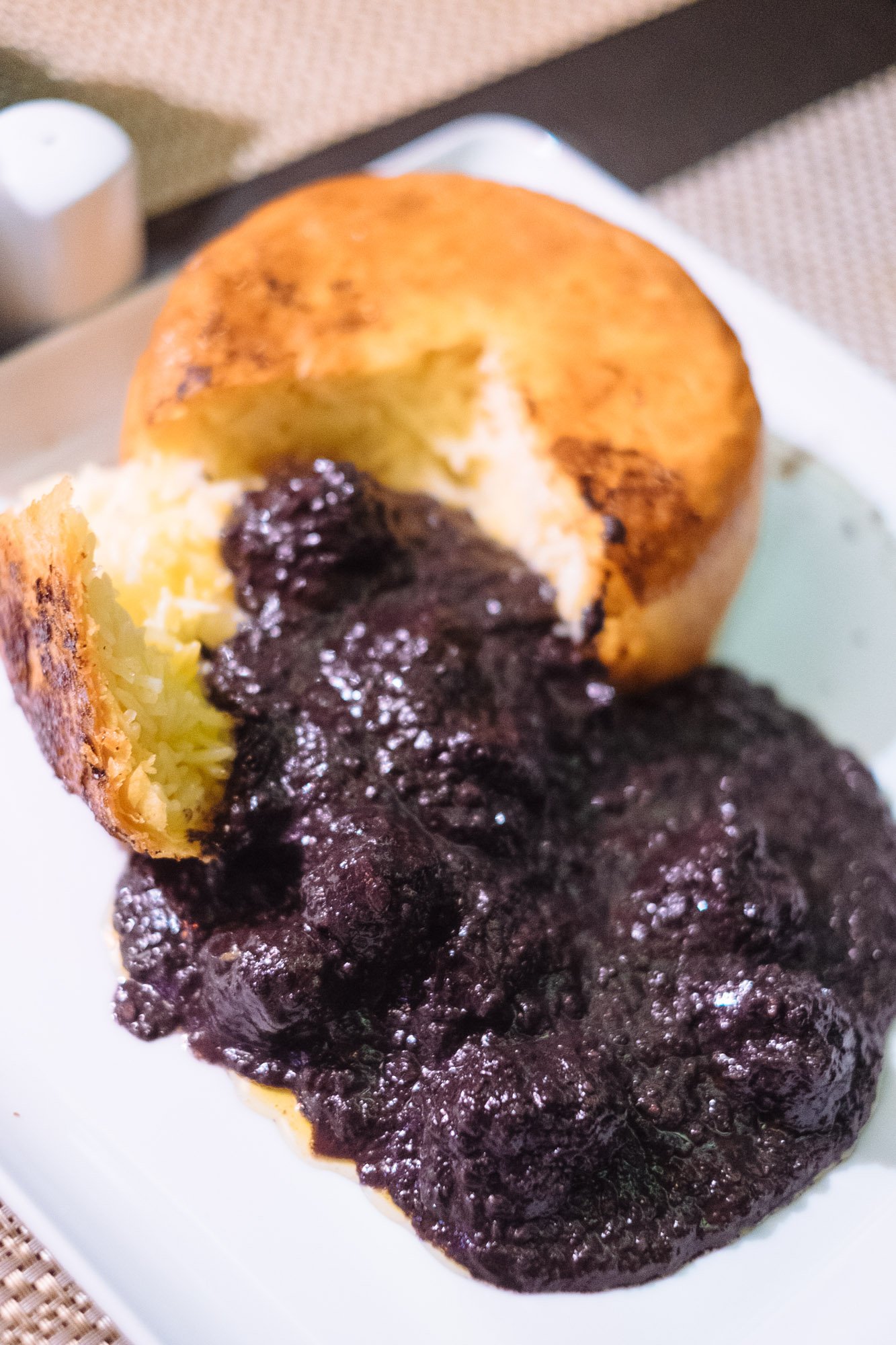
Dushbara
Small dumplings with a filling of lamb served in an aromatic soup made with fresh herbs. The version cooked for us by chef Teymur Shixaliyev was simply amazing. I heard that not everybody is able to make good dushbara, so if you want to eat the real deal, do yourself a favour and pay Teymur a visit at the Orient House Restaurant, in Baku

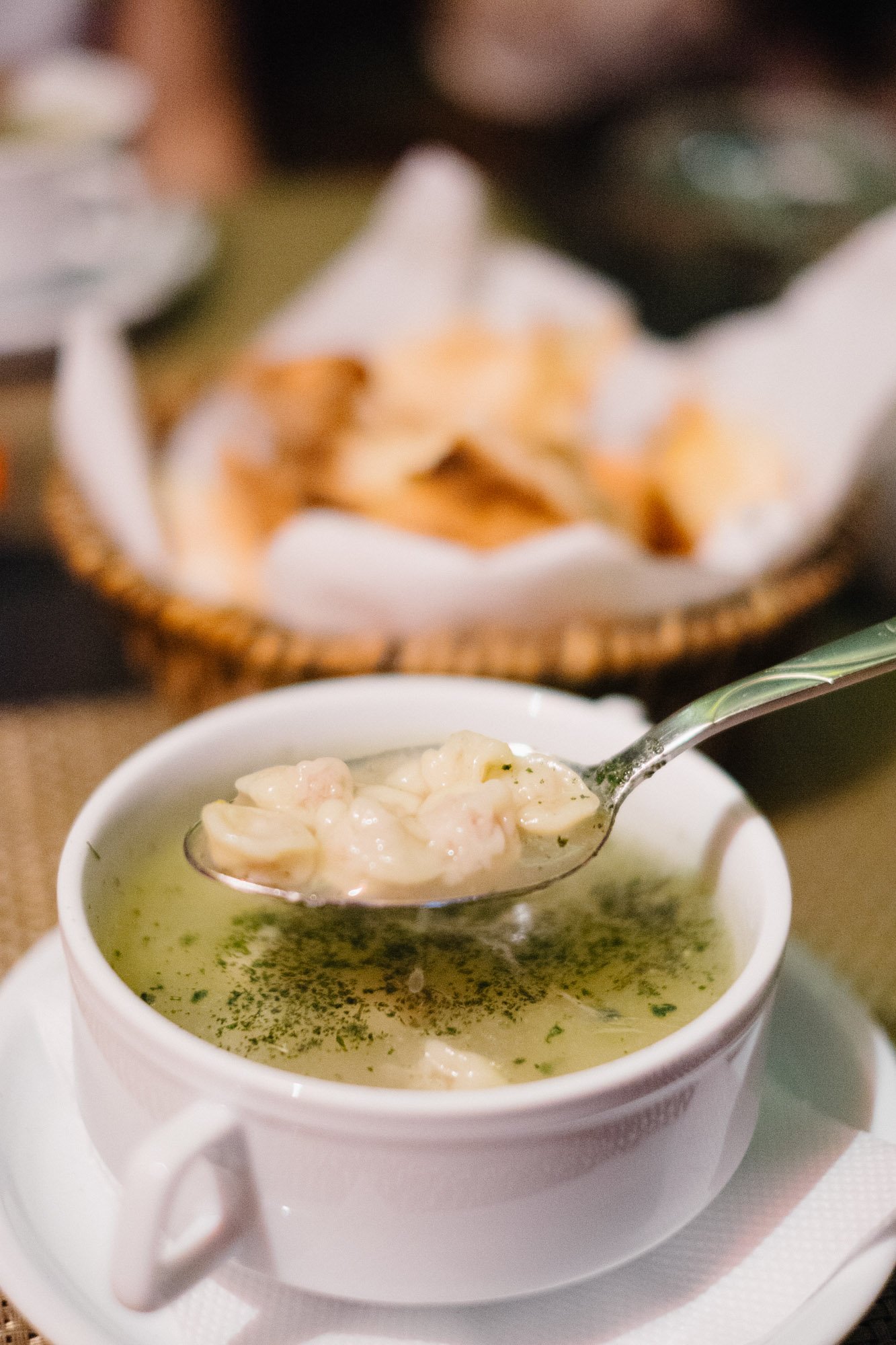
Tea and Novruz Pastries
Tea is the Azeri’s national drink and you will drink it in the morning, after lunch, or at a proper tea break in the evening. I visited Baku during novruz, an important Azeri festivity that celebrates the coming of spring, and my tea was served with novruz pastries shekerbura and pakhlava. The green sprouting wheat in the picture is called semeni in Azer. Semeni is a typical novruz ornament, it symbolises the spring and the rebirth of nature, and it is seen in many flower pots, plates or glasses, in people’s homes and around town.
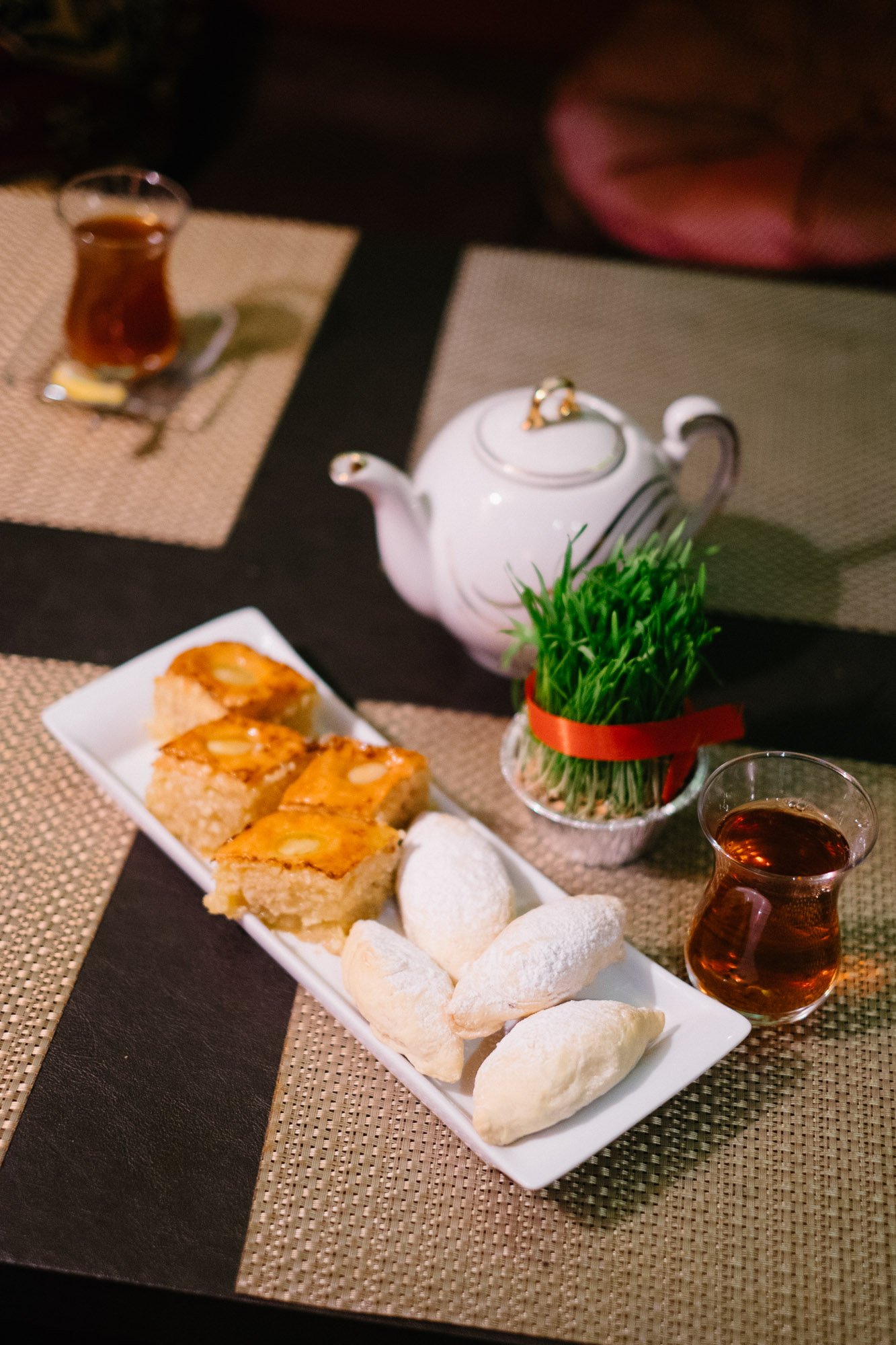
Flatbread
Bread is a fundamental of Azeri cuisine, and goes with most main courses. Along with standard bread you’re usually served several types of flatbreads. One of my favourites was tandir chorek, or tandir flatbread. The fact that the word tandir sounds similar to the Indian and Pakistani tandoor is not a coincidence. It’s more or less the same concept, and more or less the same type of oven too.
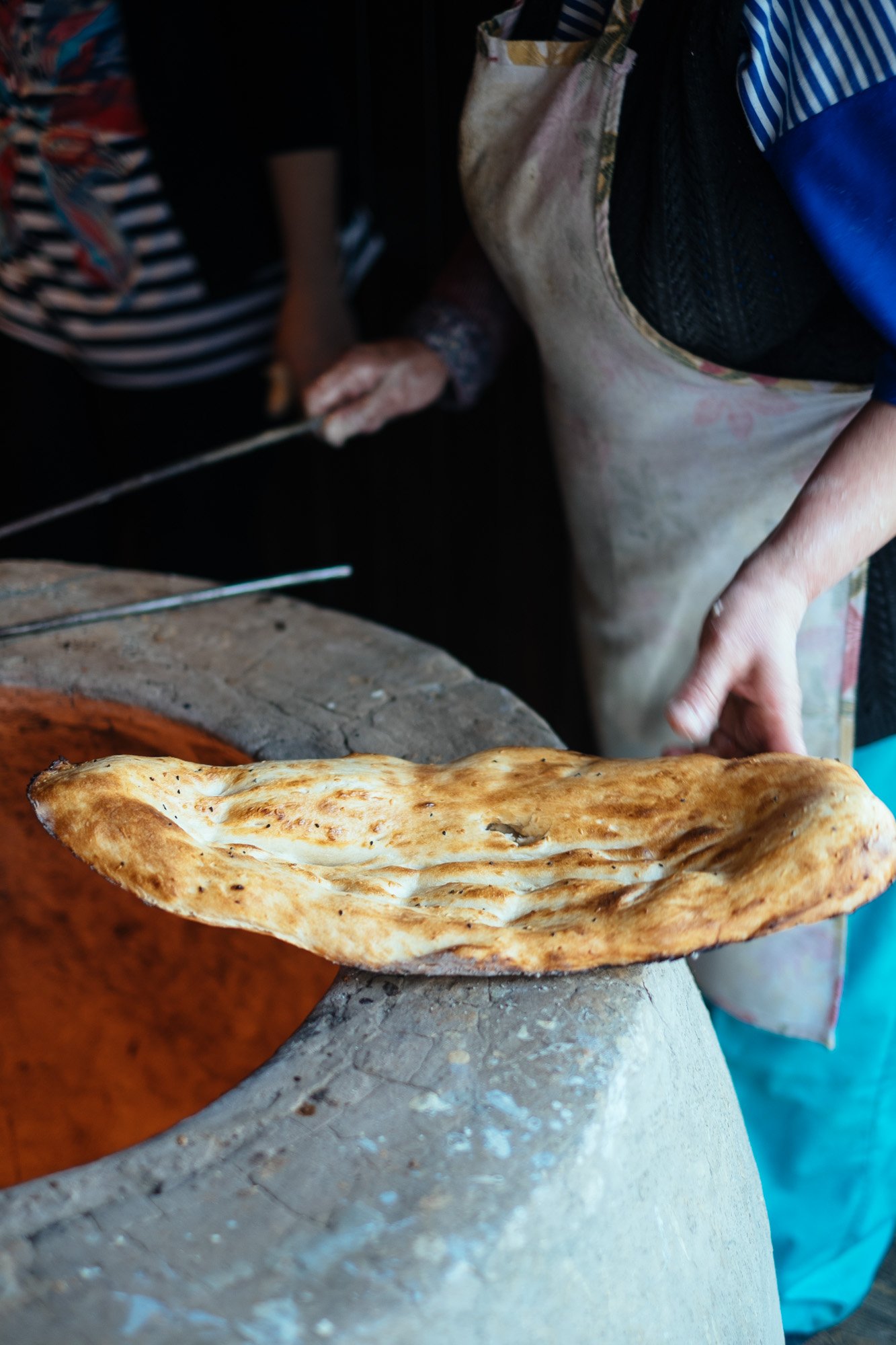
My other favourite was the qutab. Qutab comes with different fillings, including spinach, cheese and pumpkin. In my opinion pumpkin qutab wins!

Another popular flatbread is lavash. This one is commonly used to wrap kebabs.

Kebabs
The Azeri, like every peoples in the eastern Mediterranean, the middle east and southern Asia, take their kebab seriously (and I don’t blame them at all). If you’re used to think of kebab in terms of fast food or street food only you’re perhaps turning your nose up now. I say don’t be fooled, the Azeri eat shishlik (the local word for kebab) at weddings, plus you can find kebab even in the menu of the best restaurant in town. I tried several kebabs, including the lamb (lula) kebab and – I couldn’t miss this one – the aubergine kebab. They were both gorgeous and made with first quality ingredients. The aubergine kebab is a tasty concept: a grilled aubergine cut in the middle and filled with sheep fat. If you’re not vegetarian, you’ve got to give it a try!
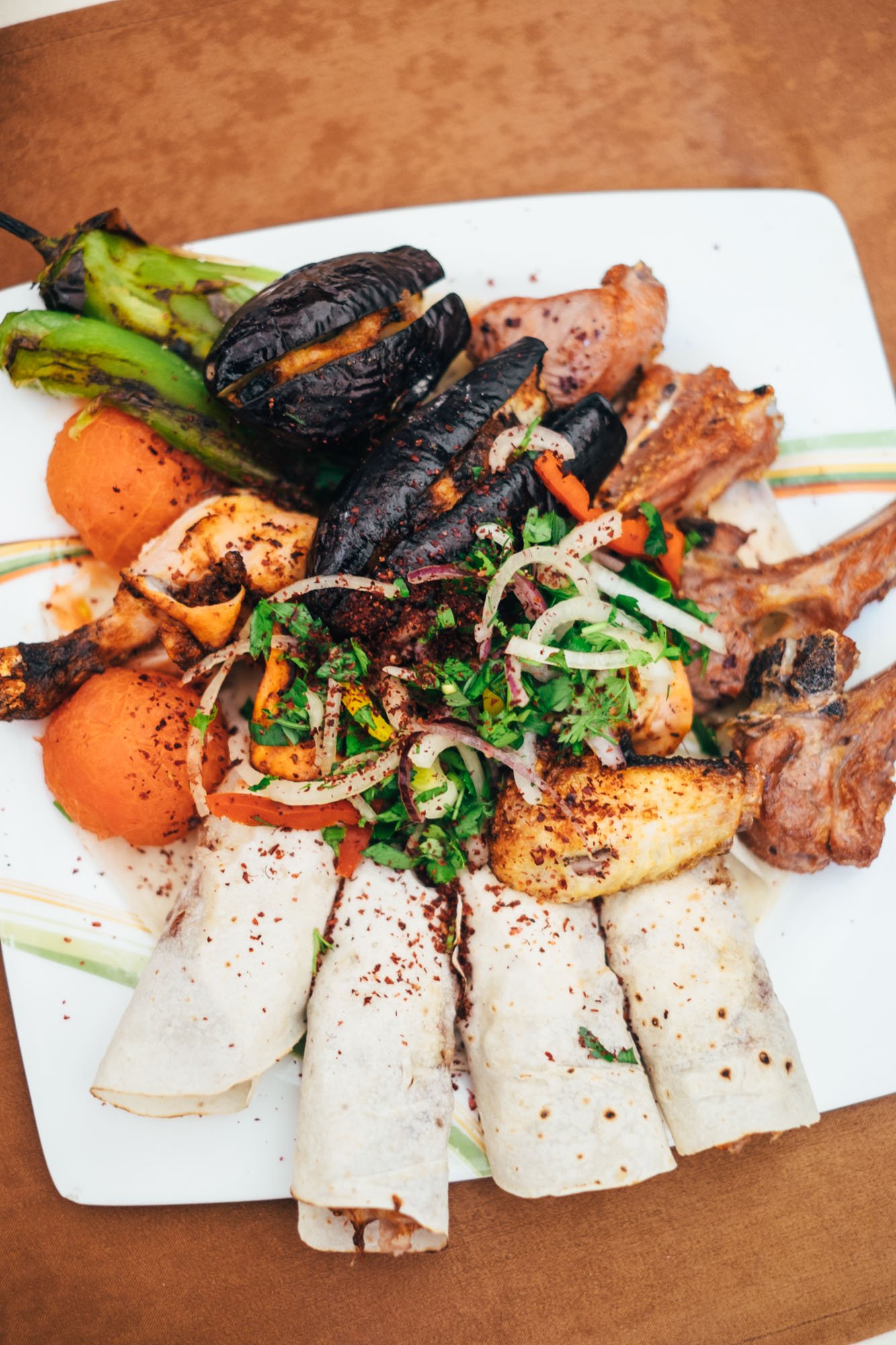
The best dishes of Azerbaijan Food article was written by Inspiring friend Emanuel Siracusa.
For more reading on Azerbaijan Food, and Azeri cuisine and Azerbaijani recipes, check http://www.news.az/recipes
Disclosure: As part of my collaboration with Nelson Carvalheiro I was invited to Baku, Azerbaijan by BEGOC, the Baku European Games Organising Committee, on a fam trip ahead of Baku 2015 ()
The European Games is a multi-sport event for athletes from all over Europe and is held every four years.The Games are owned, organised and regulated by the European Olympic Committees.
During my visit I ate at the following restaurants:
Sadaf (https://www.facebook.com/SadafAzerbaijan)
?irvan?ah muzey restoran? (https://www.facebook.com/shirvanshakh/)
Orient House Lounge & Restaurant (https://www.facebook.com/OrientHouseLoungeRestaurant)
Art Garden (http://artgroup.az/art-garden/)
All the opinions expressed in the post are mine and do not necessarily reflect those of my hosts.
Emanuele Siracusa
Emanuele Siracusa is a freelance photographer who is passionate about crafting engaging travel, culture and lifestyle related visual stories.

